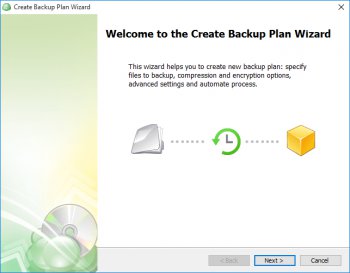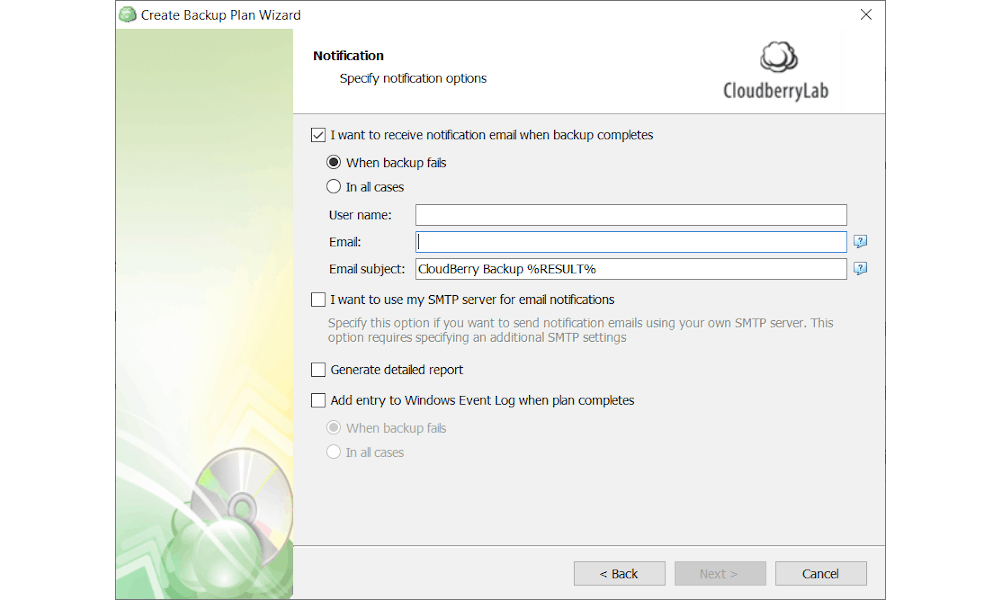

- #Cloudberry backup restore full#
- #Cloudberry backup restore software#
- #Cloudberry backup restore license#
- #Cloudberry backup restore plus#
- #Cloudberry backup restore free#
The next step is where the real work takes place. Note that Azure has an internal 1TB limit for virtual hard disks, and Azure supports only Generation 1 VHDs as of summer 2016. The latter option is useful when you simply want to harvest data from your backup instead of deploying it as a live VM.

You can restore as an Azure VM (which is what we're doing) or as a standalone Azure data disk. This option makes the most sense for us to select today. You have three restore types available to you: Backup everything you consider important with CloudBerry Backup.
#Cloudberry backup restore software#
Select the storage target that houses your bare-metal backup and click Next to proceed. in Enterprise Backup and Recovery Software Solutions. Let's do this! In CloudBerry Server Backup, click Restore to Azure VM from the CloudBerry Server Backup toolbar to open the Welcome to the Restore to Azure Wizard.Īlternatively, you can navigate to the Backup Storage tab, select the Disk Image node, right-click your target image, and select Restore to Azure VM from the shortcut menu. If you're an Amazon Web Services (AWS) shop and not an Azure one, the procedure I give here works the same way for Amazon's cloud it's just the terminology that will be cloud-specific.

This environment differs a bit depending on whether you're using Azure Service Management (ASM) or Azure Resource Manager (ARM).
#Cloudberry backup restore free#
It almost goes without saying that you'll need to have (a) an Azure subscription ( get a free account and $200 credit) and (b) a destination environment for your VM. I'm going to restore my image-based, bare-metal backup to my Azure subscription as a running virtual machine. Take note of the Restore to EC2 and Restore to Azure VM buttons in the Recover ribbon group we'll need them to complete the restore process.ĬloudBerry Server Backup 5.1 Restore the image to Azure ^ The following screenshot shows the CloudBerry Server Backup UI after I've successfully backed up my server. Compression, encryption, retention policy, scheduling, and so forth are included. I chose the option Back up only system required partitions to back up the System Reserved Partition and the system volume. We'll choose Image-based Backup here instead of System State. I created a file system backup target, but remember that CloudBerry Server Backup can be used to send your backups directly to a cloud storage account. To complete the wizard, you'll need to specify the following data: Specifically, I installed the software on a Windows Server 2012 R2 domain controller named .Ĭlick Image-based from the toolbar to start the Image-Based Backup Plan Wizard. CloudBerry Backup supports backup and a restore of the virtual machines that are created and controlled by Hyper-V server.
#Cloudberry backup restore license#
Previously users who have backed up data to the cloud storage needed a commercial license to.
#Cloudberry backup restore plus#
Setting up backups to AWS was straight forward compared to other products which is the main plus for me. Given those points, I would still recommend this product for Home/Pro users. What is also odd is the limitation of data you can push to the cloud, given that this product does not include any storage plans with it.

#Cloudberry backup restore full#
The newer version comes with full image based backup of your Windows system and restore to a dissimilar hardware. Make sure that the backup plan configurations are saved in the backup storage. In certain cases it could be that the machine is down and all the data, including the MSP360 (CloudBerry). Unfortunately, there is no support for OneDrive client side encryption which I find odd, given that you encrypt the data then push the file to the drive, unless of course there is some limitation on the API for that. With CloudBerry Online Backup, not only will you enjoy user-friendly backup and restore wizards, you'll also benefit from strong data encryption that blocks unauthorized access to your confidential information. Restoring saved backup/restore plans from the cloud Situation. I like that there is compatibility for a multitude of different cloud providers and I like also it does local/remote backups as well. Setting up a backup job can be a bit confusing at first but once you get jist of the workflow it becomes pretty simple. Right-click on the system image file and select File Level Restore option. This it does very well and is pretty straightforward. Launch MSP360 Backup, navigate on Backup Storage > Disk Image. I wanted to try out a solution for backing up data to Glacier and OneDrive using client-side encryption.


 0 kommentar(er)
0 kommentar(er)
